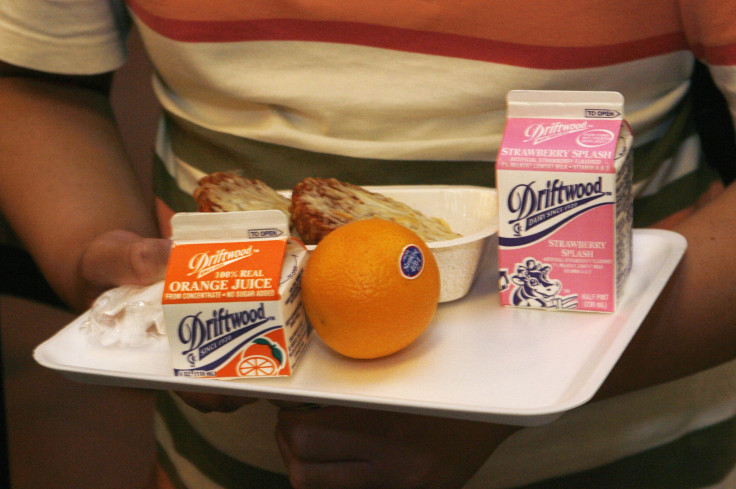More Milk In School Cafeterias? Lobbyists, Lawmakers Want Students To Consume More Dairy Under Proposed Nutrition Standards Law

Got milk? Two U.S. congressmen want to make sure schoolkids do.
Reps. Glenn "GT" Thompson, R-Penn., and Joe Courtney, D-Conn., on Tuesday introduced the School Milk Nutrition Act of 2015. The bill attempts to stop the declining milk consumption in schools by securing the drink's place in federal nutrition requirements and giving students more milk options to choose from, Farm Futures reported.
"As our nation works to replace ‘empty calorie’ foods in our children’s school meals, one thing is clear — low-fat dairy is the opposite of ‘empty,’” Courtney said in a news release. “It packs valuable nutrients, including protein, potassium and calcium — a solid foundation for building a healthy menu in America’s schools."
Under the National School Lunch and School Breakfast Programs nutrition standards, which went into effect for the 2012-2013 school year, schools have to offer 8 ounces of fluid milk with meals, according to the National Milk Producers Federation. They must give students at least two options, which can include low-fat plain milk, fat-free plain milk and fat-free flavored milk.
The bill would add low-fat flavored milk with up to 150 calories per 8-ounce serving to that list. It would also let milk be sold in containers similar to the ones for other beverages, according to the news release.
Another part of the legislation tackles the milk consumption problem directly. Milk is the top source of nine essential nutrients for kids 2 through 18, Farm Progress reported, but its popularity has fallen steadily. In 1977, only 12 percent of kids didn't drink milk on any given day. In 2007, 24 percent didn't, according to a 2013 report from the U.S. Department of Agriculture.
The School Milk Nutrition Act hopes to reverse that by "reaffirming the requirement that milk is offered in each meal." It would create a pilot program that tests improved breakfast programs and expanded sales as well as different kinds of packaging, flavors and merchandising, according to the release.
The bill comes as Congress prepares to reauthorize school meal and child nutrition programs ahead of the Healthy, Hunger-Free Kids Act of 2010's expiration this September. The International Dairy Foods Association and the National Milk Producers Federation have both issued statements of support.
© Copyright IBTimes 2024. All rights reserved.




















